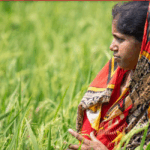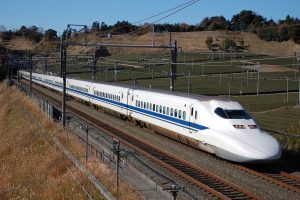Sanjay Singhvi
to say that all humankind aims at development is not to say anything at all. The statement naturally begs the question – what is development? We in the CPI (ML) have been talking, in the past few years, about a new paradigm of development. What do we mean?
The capitalist imperialist system talks about development in terms of GDP. This is a very misleading measure if development. For example, the GDP of India for 2010 grew at 8.81% (the same as the figure for Niger for the same year). However, Paraguay (at over 15%), Myanmar (over 10%), Ethiopia (over 10%), Burkina Faso (9.2%), Zimbabwe (9%) Turkmenistan and Argentina, all ranked above India. GDP measures only the growth of production of a country over the past year in its own currency. Thus if the GDP of India has grown by 8%, this is only in Rupee terms. It does not accomodate for the variation of the value of the currency. Furtfher, it only measures the volume of production as a whole Per capita GCP is the average GDP per citizen of each country. This itself is only an illusion. If one person earns Rs. 11 lakhs per month and 10 others earn almost nil, then obviously the per capita income is Rs. 1 lakh per month, which does not reflect reality at all. At best it is only a broad measure.
PPP (Purchasing Power Parity) is a method of measuring income not in terms of rupees or dollars or takas but in terms of what these rupees / dollars / takas can buy. A glass of milk or half a dozen eggs may cost Rs. 20 in India but $2 in the US. Now $2 is equal to Rs. 120. However, the Purchasing Power Parity of the rupee in regard to the US Dollar (as far as eggs and milk are concerned) is Rs.10 to a Dollar. PPP is calculated by taking into account many such essential and commonly used commodities. This is also sometimes used as a measure of income and production in economics. This takes care of variations in the relative value of the rupee to the dollar (or any other currency) and relates a persons income to his purchasing power.
Per capita income at PPP is a measure that measures the amount of material goods that, on average, a citizen of any country may enjoy. However, there are many shortcomings even in this method – it needs to be measured over time to reach a true approximation of reality as it is susceptible to sudden spikes and troughs but at the same time it needs to be adjusted for inflation over the said period of time. Even with all these adjustments, it only measures an average. This means that if the rich grow much richer very fast, this index will rise for a given country even though the plight of the majority who are poor may be deteriorating (as is happening in India in recent years).
However even with this system it does not take into account how many children are dying of hunger (India is leading in this – 42% of children under 5 are underweight, twice the proportion of sub-saharan Africa, among youth 48 percent are stunted, 20 percent wasted and 70 percent anemic). It does not take into account social problems like the caste system and patriarchy, which must be taken into account in any conception of development. It does not take into account political factors like democratic rights. Capitalist economists, till now have failed to develop a proper definition of development, leave alone a proper measure.
The UNDP (United Nations Development Project) has developed another method of calculating human development which it uses in its annual Human Development Report. Its progenitor, the Pakistani economist Mahboob Ul Haq was professedly searching for a number which would reflect not merely the “income” of any nation, whether per capita or by PPP but take into account other factors. Works of Dr. Amartya Sen were also taken into account to reach the final figure which relied on three main issues, life expectancy, enrollment in education and income. The composite of these three (the method of combining the three factors has changed slightly with effect from the 2010 report) is taken as the Human Development index of a country. Another similar index devised is the GDI (Gender Development Index) which is not to be read as a measure of Gender inequality by itself but only as a subtext to the HDI. This has also come in for its fair share of criticism. But none of these methods has been able to take sufficient factors relating to economic inclusion, to social questions and political rights. In fact, we may say that all of these measures of “development” have tried only to measure development within a capitalist context – the context of profit being the defining factor. None of these have been able to surpass this limitation.
One thing though, is that none of these indices of development have, as yet, factorred in the concept of “sustainability” or of the environment. Though today, most countries of the world have an “environmental impact assessment” required to be made before any development project can be put into place, no such universal measure of “environmental impact” has been devised or is in general use.
The socialist countries did a lot of work, both theoretical and practical on the question of “development”. The concept of mere GDP growth was abandoned. When distribution and exchange was removed from the vagaries of the market, developing a closed distribution system and rationing, a large part of the more blatant inequalities visible in capitalist society were overcome. The soviet union developed the concept of a “planned economy” and of the five-year plans which were adopted even by most neo-colonial countries, at least in name. This was to control the unplanned and skewed growth under capitalism. However, under planning, the equilibrium with the environment and setting up of democratic systems are absolutely necessary. This alone will guarantee real development. As we shall see, it was the failure to sufficiently address these questions that led to the collapse of even such a planned economy.
The question of the environment is a question that Marxist Leninists all over the world are having a new look at in recent years. In our 9th Congress in 2011, we had held that the contradiction between Capital and Nature is one of the fundamental contradictions in the world at the international level. The Congress found it to be the 5th fundamental contradiction to be ranked along with the four other fundamental contradictions which had been accepted since the time of the Third International. With this, the Congress has accepted the contradiction between Capital and Nature to be at a level with the contradiction between Capital and Labour. This development cannot be greeted with mere incredulous wonder and deserves a serious discussion.
In Capital, Vol 3 itself, Marx wrote :
“From the standpoint of a higher economic form of society, private ownership of the globe by single individuals will appear quite as absurd as private ownership of one man by another. Even a whole society, a nation, or even all simultaneously existing societies taken together, are not the owners of the globe. They are only its possessors, its usufructuaries, and, like boni patres familias, they must hand it down to succeeding generations in an improved condition.”
In 1875 Marx wrote a “Critique of the Gotha Program”. This was a critique of the program that had been drafted by the United Workers Party of Germany of that time. In response to the Lasallean conception that “Labour is the source of all wealth and culture” Marx wrote :
“Labor is not the source of all wealth. Nature is just as much the source of use values (and it is surely of such that material wealth consists!) as labor, which itself is only the manifestation of a force of nature, human labor power. The above phrase is to be found in all children’s primers and is correct insofar as it is implied that labor is performed with the appurtenant subjects and instruments. But a socialist program cannot allow such bourgeois phrases to pass over in silence the conditions that alone give them meaning. And insofar as man from the beginning behaves toward nature, the primary source of all instruments and subjects of labor, as an owner, treats her as belonging to him, his labor becomes the source of use values, therefore also of wealth. The bourgeois have very good grounds for falsely ascribing supernatural creative power to labor; since precisely from the fact that labor depends on nature it follows that the man who possesses no other property than his labor power must, in all conditions of society and culture, be the slave of other men who have made themselves the owners of the material conditions of labor. He can only work with their permission, hence live only with their permission. “
Not only does this equate nature and labour as the source of all wealth and of all culture but also gives a very important insight. Here Marx clearly states that the concept of man’s ownership of nature lays the basis for the concept of capital’s ownership of labour. It is this that is the basis for capitalism and the justification of profit.
So Marxism has always been concerned about nature as a very basic part of production and human life. But this is not all. It has always also been concerned between the balance between man and nature. Marxism has always correctly identified that man is nothing but a part of nature. In the Manuscripts of 1844 he has written :
“Physically, man lives only on these products of nature, whether they appear in the form of food, heating, clothes, a dwelling, etc. The universality of man appears in practice precisely in the universality which makes all nature his inorganic body—both inasmuch as nature is (1) his direct means of life, and (2) the material, the object, and the instrument of his life activity. Nature is man’s inorganic body—nature, that is, insofar as it is not itself human body. Man lives on nature—means that nature is his body, with which he must remain in continuous interchange if he is not to die. That man’s physical and spiritual life is linked to nature means simply that nature is linked to itself, for man is a part of nature.”
It is in the same Manuscripts of 1844 that Marx has expounded on the concept of alienation which was to play an important role in his analysis of Capitalism. He had put forward that Capitalism destroys the link between man and nature and puts both in opposition to one another. The aim of capitalism becomes to establish supremacy over nature or even to wantonly exploit nature – accumulation for the sake of accumulation.
However, it will be wrong to say that Marx or even Marxism had foreseen the environmental crisis and had provided all the answers. Many of the impacts of the environmental crisis were not possible to have been seen in the times of Marx or even of those of Lenin, Stalin and Mao. There is a debate on today about whether capitalism is a “closed loop” system or not. This means, can capitalism consume all that it creates? This is clearly not the case. Here we refer not only to the realisation crisis leading to the crisis of overproduction, which was predicted by Marx but also to the waste produced. In Marx’s time, most of the waste produced by capitalist enterprises were capable of being reabsorbed by nature – they were biodegradable. Today this is a rarity. One of the most virulent forms of waste is nuclear waste but this is not the only one. Carbon emissions, chemical and heavy metal waste are all leading to degradation of the environment where nature itself is being altered beyond recognition. One of the necessities of production and reproduction is that nature must be the medium on which labour operates. This requires nature to retain, at least for a considerable period of time, its qualities unchanged. If this itself changes, then the very basis of labour will be lost. No doubt, Marx’s analysis is still the most apt in terms of explaining the nature of capitalist economy. However, it can be further refined to bring nature within its calculations as it has brought labour into them. There is already work on such refinements being done by persons like Dr. Peter Custer, among others. It is necessary for Marxist-Leninists also to take part in such development of Marxism.
There was some theoretical work done in terms of maintaining a balance between nature and production by Marxists. Notable is the speech given by Mao to the politburo of the CPC on 25th April 1956 called “On the Ten Major Relationships”. In this he has stressed on the need to maintain a balance between Heavy industry on the one hand and light industry and agriculture on the other. While criticising the experience of the Soviet Union and Eastern Europe, he has called for increasing the proportion of investment in light industry and agriculture.
On the practical front, one of the first laws passed by the Bolsheviks upon coming to power in Soviet Russia in 1917 was on the nationalisation of land. This provided the basis for making large tracts of land over for conservation and for scientific study. On this basis, the Astrakhan Zapovednik, a large tract of land was declared a protected area. In 1921 the USSR decreed the law “On the Protection of Nature Monuments, Gardens and Parks”. Many Zapovedniks were declared in the USSR. There were 15 by 1933 and finally 115 by 1995. However, it was Nikita Khruschev who criticised the system of Zapovedniks referring famously to the Altay Zapovednik where, in a film, a scientist was watching a squirrel gnawing at a nut.
Due to various reasons, many of which were indeed genuinely prompted by the capitalist encirclement, the general attitude towards nature as reflected in the five year plans from 1926 underwent a change. The NEP gave way to the Gossplan period of centralised planning. The stress was shifted from agricultural growth to almost a total concentration on the growth of heavy industry. Even in industry, the stress was clearly on the encouragement for the growth of producer goods rather than consumer goods. The growth of output of coal, iron ore, steel, oil, etc were such that the USSR was soon the top producer of the world in those goods. However, the attitude towards conservation of nature and of “balance” with nature changed subtly to human conquering of nature and “mastery” over nature
Engels had said in “The Part Played by Labour in the Transition form Ape to Man” in Origins of the Family, Private property and State :
Let us not, however, flatter ourselves overmuch on account of our human victories over nature. For each victory nature takes its revenge on us. Each victory, it is true, in the first place brings about the results we expected, but in the second and third places it has quite different, unforeseen effects which only too often cancel out the first. The people who, in Mesopotamia, Greece, Asia Minor and elsewhere, destroyed forests to obtain cultivable land, never dreamed that by removing along with the forests the collecting centers and reservoirs of moisture they were laying the basis for the present forlorn state of those countries. When the Italians of the Alps used up the pine forests on the southern slopes, so carefully cherished on the northern slopes, they had no inkling that by doing so they were thereby depriving their mountain springs of water for the greater part of the year, making possible for them to pour still more furious torrents on the plains during the rainy season… Thus at every step we are reminded that we by no means rule over nature like a conqueror over a foreign people, like someone standing outside of nature—but that we, with flesh, blood and brain, belong to nature, exist in its midst, and that all our mastery of it consists in the fact that we have the advantage of all other creatures of being able to learn its laws and apply them correctly.
This was clearly forgotten in the Soviet Union. The concept of development became a concept of catching up and defeating the West – the imperialist powers, with no emphasis on other social, pollitical and environmental factors.
No doubt, the Soviet Union was the only socialist country in the world at that stage. No doubt, it was being attacked by 14 different imperialist armies. No doubt, every pain was being taken to see that the Soviet experiment could be sabotaged. Even so, the attempt to gain mastery over nature came with its own cost.
We cannot lose sight of the fact that great economic advance was, in fact, created in the Soviet Union in that time. During the great Depression of 1929-30, the Soviet Union was the only country which not only did not buckle but, actually, advanced. It did get transformed from a backward agricultural economy to one of the greatest industrial and scientific powers in the world. Recently, a bourgeois economist traced Russia’s (projected) share of the World’s GDP from the 18th century till date. It was found that the only time when it outstripped its share of the world’s population was during Stalin’s reign. At the height of this time, the GDP reached almost 10% of the world’s GDP, whereas the population was only about 4%.
But this is exactly the problem. Are we to go back to GDP to measure development? Was there not an unnecessary need to catch up with the West? Was a new path of development put into motion, or was this only the imperialist path of development with a difference – with a more equitable system of production, distribution and exchange? In short, is our grievance with imperialism only that it exploits men? Or also that it exploits nature?
When presenting his Report on the Fourth Five Year Plan to the Supreme Soviet in 1946, N.A. Voznesensky recalled the task which had been entrusted to him in 1941. The plan, he argued:
‘envisages the completion of the building of a classless socialist society and the gradual transition from socialism to communism. It envisages the accomplishment of the basic economic task of the U.S.S.R. namely to overtake and surpass the main capitalist countries economically, as regards the volume of industrial production per head of the population’ (Voznesensky,N.,’Five-Year Plan for the Rehabilitation and Development of the National Economy of the U.S.S.R. 1946-1950′, Soviet News, London,1946, p.10.)
The Soviet Union of that time was home to many new scientific discoveries. But science also has a class bias. In the sense that science develops in a particular direction, which is determined by class interests. The science that developed was not about how to live in harmony with nature but was about how to gain ascendancy over nature. To given an example, the Zapodveniks were cultivated and their number even grew. But then there was a debate between the scientists about the type of experiments to be done in the Zapodveniks – the attempt to restore the steppes to their imagined prehistoric state gave way to untested silvicultural theories by which different types of plants were tried to be grafted onto different environments. Experiments in acclimatisation began to abound.
Thus we can see that there are two processes on at the same time. In one process, many acts of natural conservation were taken up. Strips of forest were planted to act as wind-breakers for growing grains on the steppes. Crop rotation was introduced. At the same time, slowly but steadily, under the pressure of catching up with the west, the trend was towards taming nature – building massive dams, growing wheat in Siberia, etc. Such projects did have good results for some time but ultimately they extracted their cost in terms of degradation of the environment.
But maintaining the balance with nature was not the only shortcoming in the socialist economic planning of that time, nor can it be. The question will obviously arise – who will decide as to what is the proper balance to be maintained. Here we can link the question of maintaining a balance with nature and the question of establishing democracy in economic planning. The people must be given all power. They alone can decide what is the correct balance with nature. Only the appropriate democratic systems can lead to the appropriate balance with nature.
The same process, of wantonly increasing production in a mad race to catch up with the west, also affected the development of democratic institutions. The Soviet system was introduced as a system for decentralising of power. We must remember that Lenin gave the slogan of “All Power to the Soviets” even when the Bolseviks were a minority in the Soviets and the majority of the Soviets were opposed to the Bolsheviks.
From the 1918 Constitution to that of 1924, of 1936 and of 1977, we can see a growth of centralisation of power. Though the word “Soviets” continued to be used to denote certain elected bodies, we must remember that the original soviets, first formed in 1905 were actually fighting bodies of the workers in their rebellion against the Tsar. Though formally, democracy kept being increased, in content, the real powers were soon in the hands of very centralised bodies.
In China in “On The Ten Major Relationships” Mao had talked of the need to maintain a balance between large industry on the one hand and small industry and agriculture on the other. However, by 1958, one of the major slogans had become “Man Must Conquer Nature”. This slogan has continued even after the restoration of capitalism in China and had later been put forward by Jiang Zemin in 1994 during the inauguration of the Three Gorges Dam which was cited as a reaffirmation of this slogan.
To come to a conclusion we can say that without a doubt, both the USSR and China (and even other socialist countries) did put forward a new paradigm of development during the socialist phase. By democratising and socialising the system of production, distribution and exchange, great progress was achieved. Russia, China and other states were pulled out of the backward feudal systems in which they had languished since centuries and made into modern industrial societies. The decisions making process on production, distribution and exchange was made much more democratic. However, this was still not democratic enough. That is the main reason why, ultimately, the system ended up as a system to catch up with imperialism (and to catch up with the USSR in China to a great extent). This prevented it from becoming a radically different system of production, distribution and exchange which would have a form of sustainable development as its base. It is here, ultimately, that we find the root of the germ which led to the restoration of capitalism in both.
When we talk today of an alternative paradigm of development we mean the implementation of true democracy, leading to socialism, in the sphere of production, distribution and exchange. Today, in our country, we are, in fact, moving away from such democracy with each passing day. Take the rampant imposition of nuclear power plants, mines, ports, etc upon the people. Though there is a Panchayat Raj Act to pay lip service to democracy, in fact, the people of the areas to be “developed” are rarely consulted on the question of whether they want such nuclear plants or mines or ports. These are only foisted upon them. We have to develop newer and better methods of people’s participation in decision making in production. Today in the age of the internet and with the communication and information “revolutions” this is more possible than ever before in many different ways.
Democracy requires knowledge. It requires fighting against all obscurantist ideas like religion, superstition etc. It requires fighting against the various biases that exist in society in the form of gender, caste, region, language, etc. Today, to an ever greater degree, imperialism uses all these biases for its own aims.
It is not our task to put forward a blueprint about what the new system of democratic decision making will be. That would itself be undemocratic. The new systems will develop in the process of struggle against the exploitation by imperialism. It is our task to be a part of the struggle of the people against such expolitation by imperialism and to expose the system behind that is the root of such exploitation. At the same time, we also have to expose the social democratic forces. Today, even the best thinkers within the CPI and CPI(M) talk only of “going back” to the welfare state and the tenets in our Constitution. This is idealism. History has never allowed anybody to go back. On the other hand, even such thoughts of restoring the democracy at least available during the welfare phase, is opposed by the top leadership of the CPI (M).
What we have to stress is that there can be no going back. We have to go forward to a system with greater democracy and a more robust sense of justice. We have to go to more equitable sharing of natural resources, not only with other humans but will the rest of nature. We can today only put forward broad principles for such a direction to a new paradigm of development :
1. More direct and proximate democratic processes for taking all decisions on production;
2. Free information to all including scientific papers in simple language being made available for all;
3. Fight against religion, superstition, etc. Fight against patriarchy, brahminism, regional and language hegemonism, etc.
4. Sustainable development is the only path – Man as a part of nature and not Man vs Nature as the basis of development.
All these will have to be further developed during the course of struggle. Of course, it is not being suggested that these principles will replace the socialist principles of development of abolition of private property and planned development. These are to be seen in addition to the socialist principles of development which achieved such success in the 20th century.


















